Charger Panasonic BQ-CC57
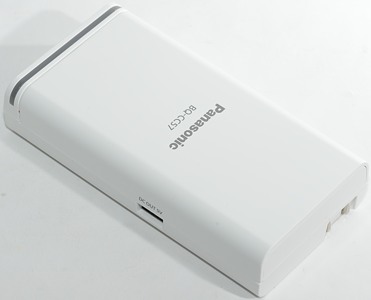
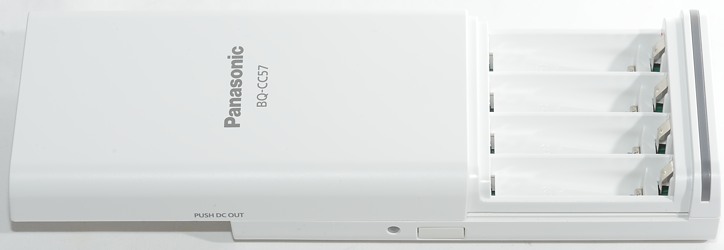
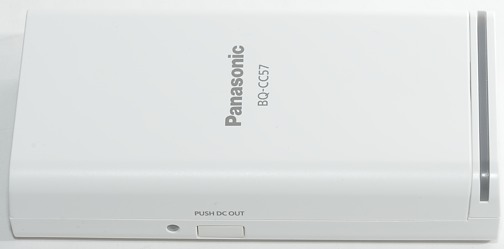
Panasonic has a line of NiMH chargers, some are fast and smart, others dumb. This one here is fairly fast smart charger with power bank functionality.
I found this charger on ebay from jp-prime-mk (Japanese dealer).
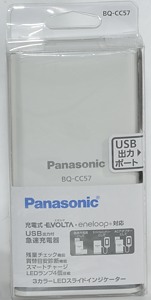



I got the charger in a blister pack.
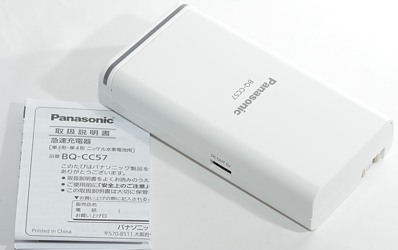
The pack included the charger and a fairly long instruction sheet. Not the usual multi language one, only Japanese (I assume), with a lot of explanation on.
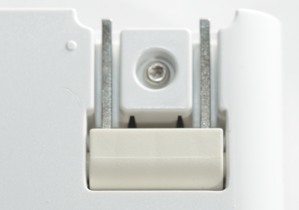

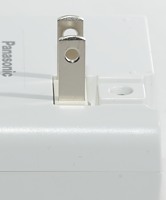
The charger has a foldable US plug.
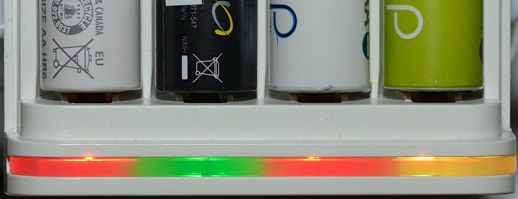
The charge status indicators are more than just a red/green led, they start from red and slowly changes to green while charging (A bargraph would have been more practical, but not looked as fancy).
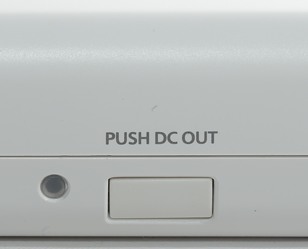
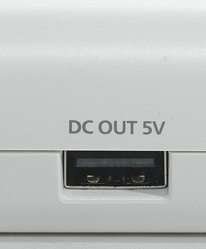
The charger has a usb output, it will work both as power bank and as usb charger. The button must be pushed to turn the usb output on, the green led beside the button will be on when usb power is on.

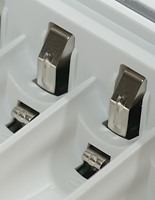
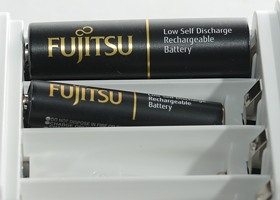
The charger has the typically two level slots used for AA and AAA batteries.


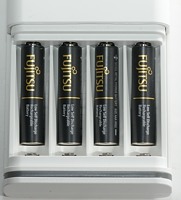
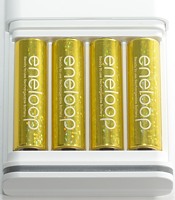
Measurements charger
- When not powered it will discharge the battery with below 0.01mA
- If the charger detect an error the red led for that channel will flash fast.
- Charge will restart charging after power loss, or battery insertion.
- Power consumption when idle is 0.3 watt
%20%231.png)
This is not a -dv/dt termination and it is slightly premature, but the one hour top-off charge mostly compensates for that.
The top-off charge adds about 100mAh extra.
%20%232.png)
%20%233.png)
%20%234.png)
Two -dv/dt termination and one that probably is isn’t, but the battery is filled in all cases.
%20%231.png)
%20%231.png)
%20%231.png)
With the 3 high capacity batteries only one has a final temperature raise, i.e. is full, but all are very close to full.
%20%231.png)
Filled with -dv/dt termination.
%20%231.png)
The charger is not fast to terminate on a full cell, the speed is what can be expected for a -dv/dt termination.
The top-off charge is not really needed here.
.png)
With four batteries the charger current goes down, but it do terminate correctly.
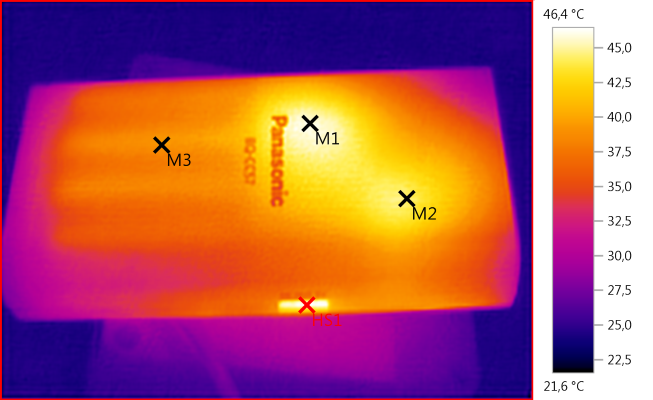
M1: 46,1°C, M2: 44,4°C, M3: 39,2°C, HS1: 46,4°C
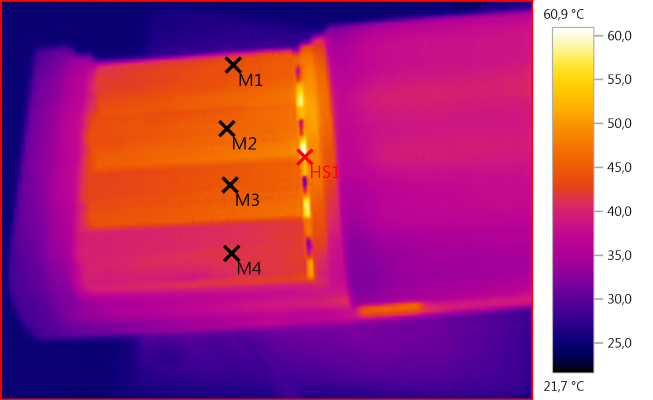
M1: 44,0°C, M2: 45,7°C, M3: 44,5°C, M4: 41,2°C, HS1: 60,9°C
The batteries are about 5°C warmer under the lid, it is probably a good idea to charge with it open.
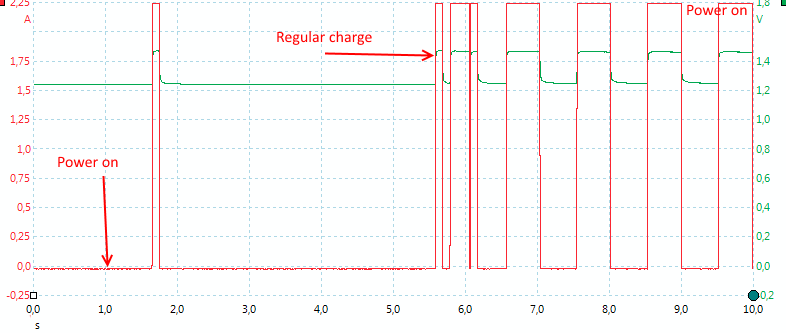
When turned on the charger plays with the lights, before starting to charge, this takes nearly 5 seconds.

With 3-4 cells the duty cycle is changed, removing the extra cells will not change the duty cycle again.
It looks like the charger has one 2A charging circuit and will switch it between 2 or 4 channels, depending on number of batteries.
USB output
- Output turns off after about 100 seconds with below 70mA load.
- The power bank requires four cells to be activated.
- Output is coded as Apple 1A
- Batteries are used in series for usb output.
USB output mains powered

The efficiency is not very impressive when used as a usb charger and it can barely supply the 1A current.
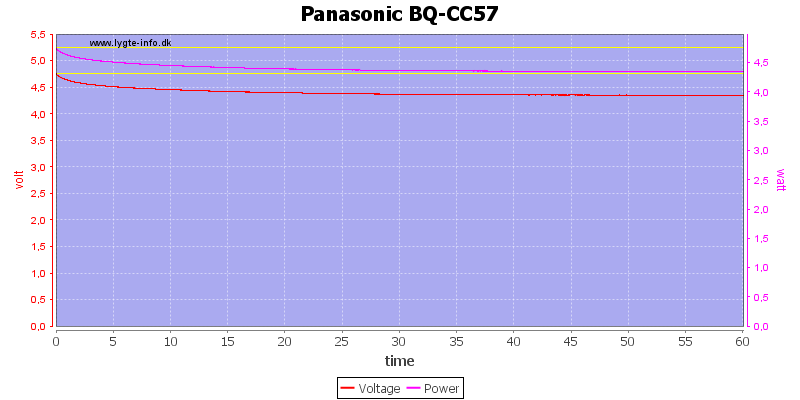
Running for one hour with 1A output current is very hard for this charger, the voltage drops significantly, most phones will reduce the charger current with this voltage drop.

M1: 46,7°C, M2: 42,5°C, HS1: 48,5°C
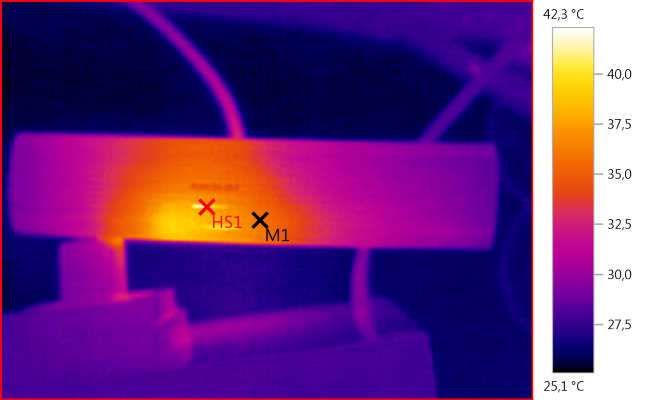
M1: 36,0°C, HS1: 42,3°C
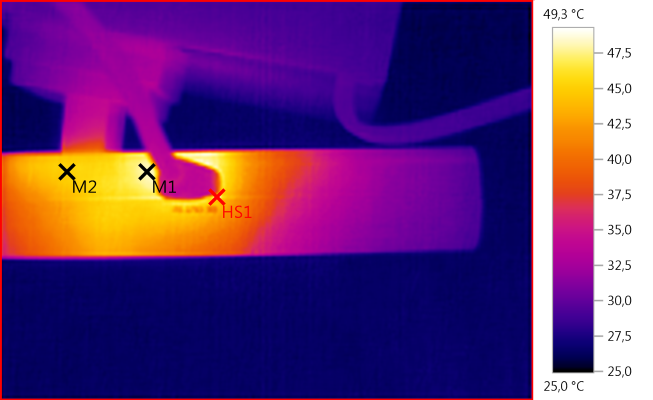
M1: 48,2°C, M2: 45,1°C, HS1: 49,3°C

Noise is 10mV rms and 200mVpp

Noise is 11mV rms and 207mVpp, the noise is low.
USB output battery powered (Power bank)
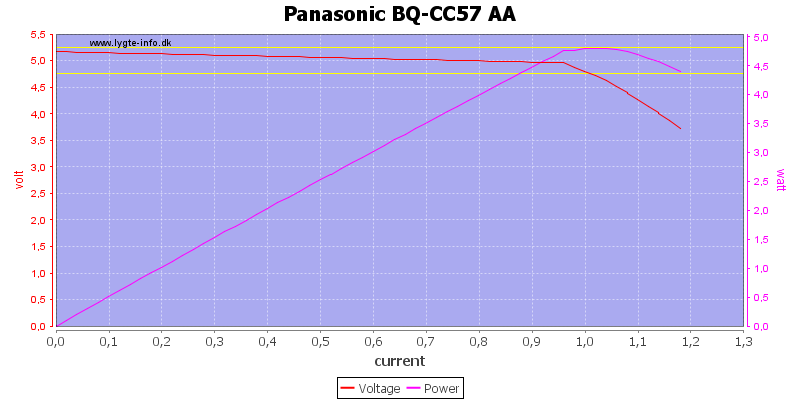
On batteries it also has problems with 1A current.
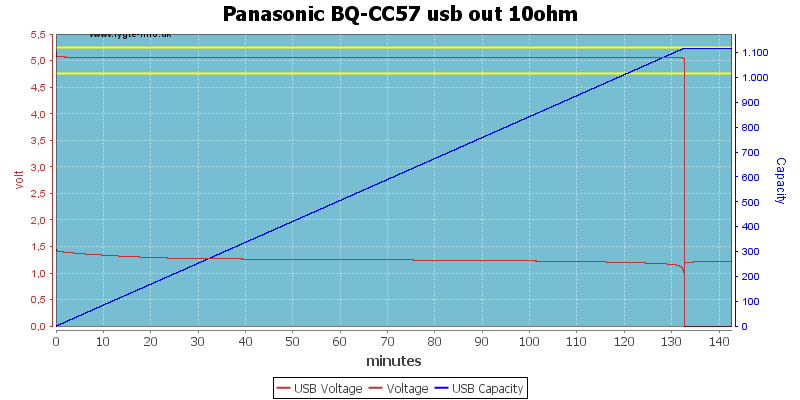
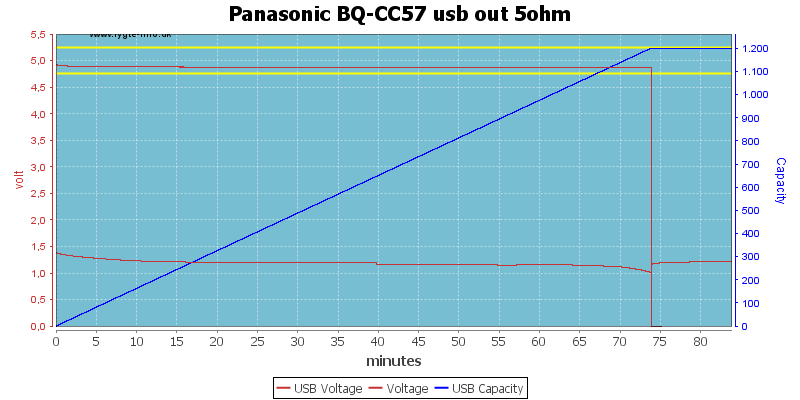
The 1A output is much better on batteries, than on mains power. Here the voltage stays at about 4.8V until the batteries is empty.
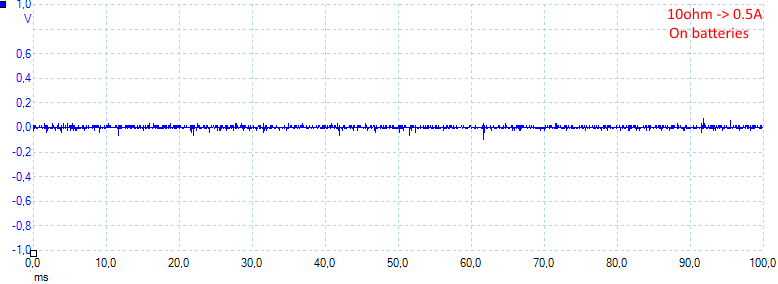
Noise is 7mV rms and 170mVpp
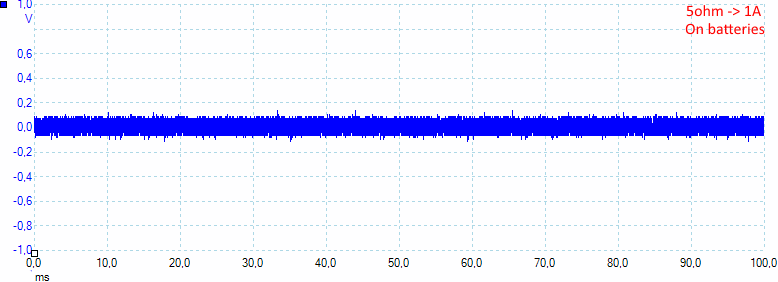
Noise is 57mV rms and 330mVpp, at full load there is some noise in the output.
Conclusion
I am not really impressed with this charger. Termination is fairly good, but not perfect, to handle this it supplements with a one hour top-off charge.
The usb output can be used for smaller phones, with only 1A charging it is not going to fast charging anything. The power bank capacity is fairly low, due to the AA batteries (A single 18650 would be just as good), but it is larger than a 4x18650 power bank.
If you really want everything to work on NiMH batteries, this may be the device (It works fine), but getting seperate device may take up less space and work better.
Notes
Here is an explanation on how I did the above charge curves: How do I test a charger





















%20%231.png)
%20%232.png)
%20%233.png)
%20%234.png)
%20%231.png)
%20%231.png)
%20%231.png)
%20%231.png)
%20%231.png)
.png)















